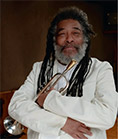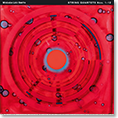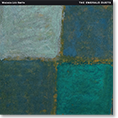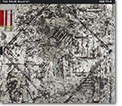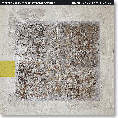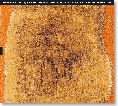THE MUSIC
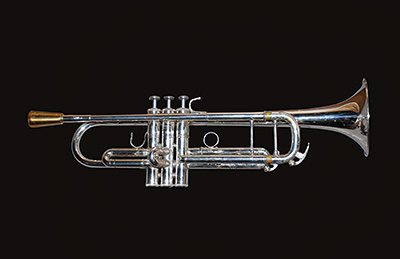
TRUMPET
1 Trumpet
The trumpet,
A metallic vehicle that is capable of expressing
Every sound and rhythmical
Manifestation possible.
Limited only by
One´s levels of inspiration,
Imagination and execution.
It is constructed in a form that allows
The purest and most imaginary
Sonic expression
In the Great Beauty.
Not of this world or the next.
2 The Trumpeter´s Sonic Discourse
With inspiration,
Vision, and an elegant breath, the performer
Releases a message from the source
Through the horn.
The trumpeter pushes forth a
Music-field that pierces the soul and
Unlocks the hearts of the silent lovers.
In performance,
Secrets are unveiled through sound,
Rhythm, silence and space.
Creative music is expressed in the
Languages of the heart and soul.
The mystery of the Beloved
Is coded.
3 Inspiration
Fired up.
It is a luminous wave of energy
That moves from the breath of life
And creates an inspired moment.
That inspiration is channeled through the
Trumpeter´s heart to create music.
In that reflective moment of inspiration,
The artist formulates a musical imprint
And constructs music in the present moment,
With his creativity, performance skills, and emotional range,
That satisfies both the ensemble and the active observers
Of a well-balanced music.
What is heard and felt is clear,
And more precious than a rare diamond.
When the music-object is pure,
Our experience is a meditative-reality,
Which can knit together the hearts of lovers,
And in that fleeting moment embraced in
Divine Love.
Enlightened,
And annihilated in perfection.
Truth remains.
New Haven, December 1, 2020
Wadada Leo Smith
...
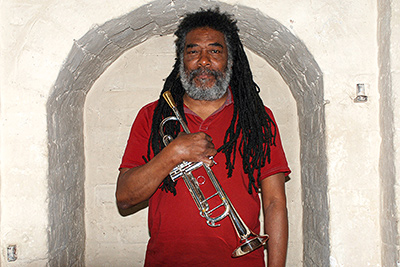
WADADA
Wa da da
equal sound
Wa da da dip bleep sigh long short da da
pure sound
Wa da da is the sound man
his trumpet calls
with pure sound
halting you in your tracks
Love the sound
journeys thru time transported
positive energy placed
and dis-placed
sound man Wadada
sound on sound true vision
vision sound
Wa da da
well, we know the 3 things you need to communicate music
first is sound ! second is sound ! third is sound !
the horn with the man
the man with the sound
total /complete his sound commands our ears
love the sound love the sound
journeys thru time
positive energy moved …… with his trumpet
boundless sound full endless
Wa da da
pure improvisation manifested
spiritual connections
directions to the soul
soul full
sound full
mind full
WADADA
New York City, April 2019
Oliver Lake
...
NOTES ON THE NATURE OF THE MUSIC
Disc 1
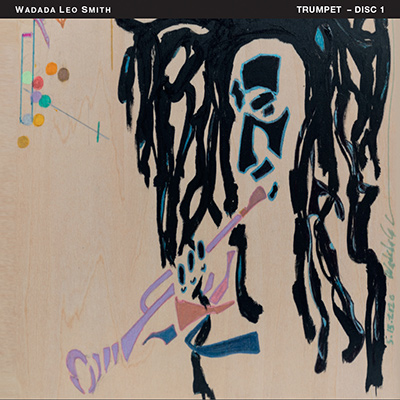
Albert Ayler
Albert Ayler (1936-1970) was a spiritual master in the Sufi tradition, but not of that tradition. Through his saxophone, he released sonic litanies. His music is ceremonial and a practice illustrating the living experience.
Ayler was a gifted composer and performer, who constructed his sound, silence and his unique concept of rhythms to create his music. He had the ability to place a precise weight onto a specific set of pitches. As an example, causing some of his sounds in the set to be thinner and others to be louder. Another example of how he used sound is to recognize that, in his solos, one can hear micro-sonics, sounds that are larger or smaller than the "standard pitch," and multi-phonic surges. I believe that people of spiritual practice can find a concept of prayer and meditation in his music. Albert Ayler changed the musical language with creative activity, and not with the dynamics of "swing."
Rashomon
In Memory of Robert Fenz (1969-2020), who introduced me to the film Rashomon and was a very close friend. And dedicated to Velibor Pedevski, who started me on the journey of collecting films.
Part 1 The Film
Part 2 The Killing
Part 3 The Court
Part 4 The Memories and Reflections
Part 5 The Verdict
According to the great filmmaker Akira Kurosawa (1910-1998) and his writers, Rashomon was created to set up a situation for the viewers to test their understanding of the actions and the narratives of the film. Also, the film challenges the viewer´s belief as to what he or she sees in the film.
It is a psychological game, where guessing might be used as the basis for information and to use that information to connect the imagery and action to understand the meaning in the film.
The question is, will the viewers believe what is constructed in the film and the recounting of the events in the testimonies. The witnesses´ narratives about the murder in the film will always be different, especially with the complex nature of human beings.
As a creative artist, my view of Rashomon is about the composition of the film, how it allows each observer the opportunity to develop a perspective of what actually happened in the film.
The film is a metaphoric narration of the activity in the film and not necessarily a condition for believability, except in the recounting of the events by the witnesses. One can know that there are many situations or events having multiple meanings and that each viewer may have clarity and a legitimate comprehension about what they actually saw. The problem occurs when there are different accounts of the same event.
Often, it is the gifted person, whose perception is accurate.
My composition is a presentation of those multiple viewpoints covered in the film. The long sounds in my performance are continuously changing in their size and shape with my uses of sonic inflations of different magnitude, which represent the diversity of views in Rashomon.
The creative elaborations come after the composed nine-sonic theme and, to conclude each of the creative elaborations, I then play the tenth and final sonic, which is the longest sound in the score and the performance. My creative elaboration represents the different viewpoints of the witnesses, and is my musical meaning of the film.
What is true can be captured from multiple viewpoints and still be a part of the true event. But often truth is such a large phenomenon that it is not easy to be captured from a single vantage point.
That is only possible with the Creator.
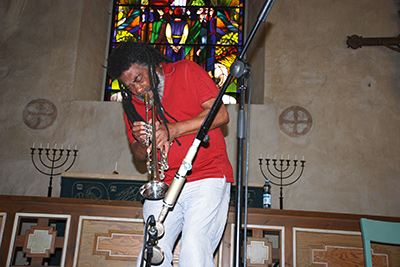
Howard and Miles - A Photographic Image
Howard McGhee (1918-1987) and Miles Davis (1926-1991) both had beautiful sounds, and the character and quality of their sound was unique and powerful. Their musical intellect and passion were the main qualities that separated them from other trumpeters and performers who came out of the Joseph Oliver and Louis Armstrong dynasty of music making. It was Freddie Keppard, Joseph Oliver, Louis Armstrong, Jabbo Smith and Dizzy Gillespie, who created a musical language that was chromatic, vertical, heroic and optimistic in character.
I believe that Howard and Miles continued the lyrical and horizontal tradition of Bubber Miley and Joe Smith in their trumpet music. It was Miles Davis´ innovation that introduced the majestic-moody, mysterious-dramatic, psychological expressions and a new rhythmical-silence into the musical language.
Let me be clear, I am not talking about influences and styles, what I am referencing is the idea of a creative language, which is the real energy that defines the dynamics of musical traditions.
This composition was originally inspired by a photograph by William P. Gottlieb, "Miles Davis and Howard McGhee, c. 1947."
Metallic Rainbow (For Steve McCall)
Steve McCall (1933-1989) was an exceptionally gifted natural drummer. During the years we performed together, I never saw him to sit at the drums and practice or try to figure out what he was going to do with the drums. Often, when he sat down, he was prepared to create music right away without any prerequisites or any kind of preconditioning.
It was in a church on the campus of the University of Chicago, where I heard Steve McCall play an amazing solo. He played his entire solo using only the cymbals. I have never experienced any drummer, who created a solo performance using only the cymbals.
Steve´s solo was fascinating.
We were close friends and I truly miss his art in today´s musical world.
Sauna - A Healthy Journey (For Petri)
One of the major properties of the living organism is heat. The use of thermic therapeutic treatment is an important element for healing and a source for purifying and regenerating the human body. The nature of heat therapy is understood and used in many healing systems throughout the world.
In 1977, Peter Kowald, Günter "Baby" Sommer and I toured Japan. Our tour took us to the northern island of Hokkaido and there we had a day off. The presenter invited the trio to have a treatment in a hot-spring sauna.
In the early 1970s, I had experienced the sauna in Holland with Henry Threadgill and Leonard Jones; it was a fire-based heat and very dry.
But the Hokkaido sauna´s heat was produced from an underground hot-spring, which supplied hot water for the stone-structured pool.
The pool´s heat was maintained by a composition of large rocks placed at different locations inside the structure. And, during the sauna, an old woman would come and pour cold water in the areas around the rocks to help control the heat. That sauna I enjoyed.
Over the last five years, I have experienced the sauna tradition in Helsinki, Finland, and in the Finnish countryside. My friend Petri, who lives in Helsinki, has taken me to the Finnish Sauna Society, which is a very public space full of people, with areas for one to relax, eat and swim, and a place where one can have a special wash performed by an attendant.
The Finnish sauna has a ritual tradition with clear ideas about when to throw water onto the hot stones on top of the wood-burning stove. It has a meditative quality - no talking. It is a sauna tradition that has several stages in its process.
After a sauna treatment, the body and mind feel completely balanced and one´s mood is delightful.
...
Disc 2
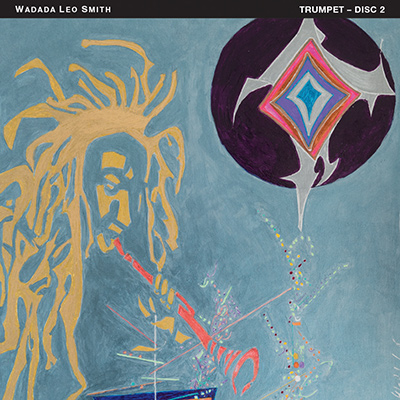
Malik al-Shabazz and the People of the Shahada
Malik al-Shabazz (1925-1965) was one of the early Islamic masters in 1960s America. He brought the teachings of the Prophet Muhammad, (PBUH). His spiritual, sociological and political message was a direct confrontation with the power-based politics and the governmental suppression of the liberty and justice of African-American people.
al-Shabazz´s message represented a very important element in the struggle for freedom and helped to establish a liberation movement in the United States and Africa. His ideas generated philosophies, spiritual and social thoughts about civilization. In today´s world, his influence concerning liberty continues to be important.
My composition is about al-Shabazz´s spiritual teaching of Islam and the people of the shahada. Companions of the Prophet, or aṣ-ṣaḥābah, were the disciples and followers of the Prophet Muhammad, (PBUH), who saw or met the Prophet during his lifetime and were physically in his presence. The people of the shahada are those believers who came after the time of the sahābah and who follow the Prophet and his teachings without having seen him.
The Great Litany - A Reflective Memory of al-Shadhili
Part 1 The Opening
Part 2 First Meditation
Part 3 Second Meditation
Part 4 Third Meditation
Part 5 The Closing
Shaykh Abu al Hasan al-Shadhili (d. 1258) was a thirteenth century Sufi saint, who was born in Morocco and died while on pilgrimage.
He lived in Tunis but eventually moved to Egypt, where he lived in Alexandria. During that time, he established his mystical movement in Islam.
I became aware of al-Shadhili´s teachings in 2005, from Elmer H. Douglas´ translation of "The Mystical Teachings of al-Shadhili," published in 1993.
The Opening is a sonic design signifying the stillness needed to prepare for the meditation and its intuitive moment of reflections.
The three Meditations represent the ritual purification and the devotional mood needed to access the meditative arena and the terrain of the spiritual subjects that are covered in the shaykh´s Great Litany.
The Closing represents the quiet and stillness attained after intuitive knowledge has been revealed.
A musical interpretation of the Great Litany cannot be precisely translated into musical language, but the expressive and intuitive sensibilities of the text´s qualities might be captured, as well as some of the associated meaning it contains. Therefore, the music can be an aid for the traveler´s journey toward the meaning of the Great Litany. That is my hope.
Leroy Jenkins Violin Expressions
I first encountered Leroy Jenkins (1932-2007) at an AACM meeting, and a few days after that meeting, we spontaneously formed a group, Braxton, Jenkins and Smith. It was on a Sunday morning when we met at Anthony Braxton´s apartment. After our arrival, Anthony set up his recorder and microphone to record our performance. We took our instruments from their cases and started to play, with no pre-set conditions about what we were going to play. We began to create as an ensemble music of which we would later develop our ensemble´s identity.
Our first public performance was at the University of Chicago. Everybody came: artists, musicians, dancers, friends, and people who were new to our music. After the concert, we joined the people in the house; in the faces of some of the people, we could see their joy and excitement about our performance, but a few of the people we met seemed confused.
That night, Braxton, Jenkins and Smith had introduced an ensemble music, which had no drumming or bass. People said to us: ‘What happened to the bottom?" And others would say, "No drums?" To us, those questions made no sense because what we were after, we had achieved. It was a unique ensemble with a new musical sound for that moment in the late 1960s. Looking back, I regret that we did not have the foresight to record more with that ensemble. There are tworecorded documentations of this ensemble in its purest form: the composition "840m-Realize-44M" on Anthony Braxton´s 3 compositions of new jazz (recorded in March 1968 and released on Delmark Records in 1972) and the album Silence (recorded in June 1969 just before us leaving for Paris, France, and released on Freedom Records in 1974).
In the summer of 1969, we went to Europe; Leroy and I went together on a boat and Anthony flew to Paris a few weeks before we left. During the boat trip and with our stay in Paris, I got to know Leroy very well.
What is fascinating about Leroy´s artistry is that he never entered the stage unprepared, and on stage, he maintained a high level of awareness, creativity and a musical adventurousness, whether he was playing a solo or participating in the ensemble´s activity. I have met very few artists, who have achieved his level of awareness in making art. I rank him as one of the great composer-performers.
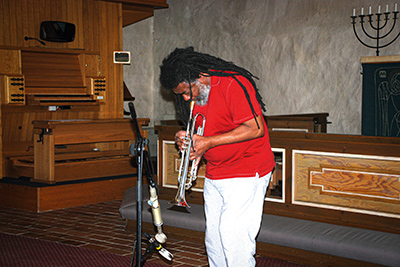
James Baldwin No Name in the Street; War
James Baldwin (1924-1987), a great writer and activist, was the first author I read that I could have a direct connection with as a human being. I am empowered through his texts and his complicated ideas about society, which I understood as not being abstract in their meaning.
His three volumes of essays, Notes of a Native Son (1955), The Fire Next Time (1963)and No Name in The Street (1972), have influenced my philosophical and poetic thinking about the world, whether the view was tragic, or a revolutionary one to change American society.
Baldwin, as a creative artist, always expressed ,who he was in every line or in the chapters in his novels and essays, which gave the impression and feeling of a natural relationship between him and the reader.
While reading Baldwin, I felt as if I was conversing with him and not feeling any distance between him, the book and I, the reader.
I believe that Baldwin had a clear comprehension of the role of the activists and their skills and abilities to establish justice and liberty for the transformation of society. Although he was not often recognized for his contribution to the civil and human rights movement, his work as an activist was paramount.
Amina Claudine Myers
Amina Claudine Myers, a mature woman who would thrive in the male-dominated AACM. As a creative artist, her musicality was as developed as any member of the association. In conversation or dialogue concerning music or performance, she was not distanced, but completely engaged in the exchange.
My first encounter of Amina was in a performance in a small club on the South Side of Chicago. She was playing the organ, Ajaramu was drumming and Malachi Favors was the bassist.
The music that they created was electric, on fire, and burned down everything in its path. It was a soulful-abstract creative music that had an empowering rhythmical energy, which beautifully uplifted everyone in the club.
...
Disc 3
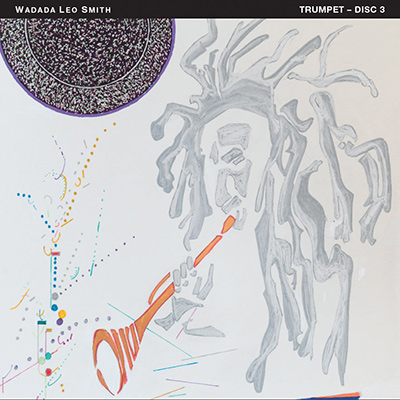
Sonic Night - Night Colors (For Reggie Workman)
Reggie Workman is an excellent composer-performer, a poetic bassist, who produces his sound by using multiple nuanced techniques to generate his organic field of musical texture and colors. In his solo-form, he constructs powerful melodic units that consist of different types of plucking, unique stops and a manipulation of the strings, which he pulls across each other onto a different area of the fingerboard to create an otherworldly sound in his musical creation.
Reggie´s ensemble interactions illustrate a clear design of imagination, originality and beauty.
Discourses on the Sufi Path - A Remembrance of Dr. Javad Nurbakhsh
Part 1 Chivalry; Noble Attributes; Unity of Being
Part 2 Festival of the Two Breaths
Part 3 Pilgrimage; The Heart; The Valley of Annihilation; Divine Unity
Part 4 Presence of Breath; Presence of Heart
Dr. Javad Nurbakhsh (1926-2008) was the longstanding master of the Nimatullahi Sufi order. He was born in Kerman, Iran, and died in Oxfordshire, England. After coming to the West, he lived in the United States for about six months. Later, he moved to England and lived in Oxfordshire. From there, he established the present version of the order throughout the world. In his Discourses on the Sufi Path, the Master illustrates clear examples of what is required to attain to sufi knowledge and its practice.
I have been studying his discourses since 1998 (Discourses on the Sufi Path, 1996; In the Paradise of the Sufis, 1979; and Divani Nurbakhsh: Sufi Poetry, 1980; Khaniqahi Nimatullahi Publications) and, with each new reading of the texts, my understanding of the practice of Sufism is enhanced.
Dr. Nurbakhsh´s teaching has influenced the way I perform my prayers, engage in meditation and reflection, and perform zikr.
I cannot tell you what his discourses are about, because whatever I tell you would be like looking into the window from outside of the khanqah (assembly place of the dervishes and students), which is not a vantage point to acquire real knowledge. Therefore, to encounter the teachings and to learn how to travel the path to attain true knowledge is the practice of Sufism. It cannot be realized by reading, or listening to someone talking about it, but through the practice.
Sonic Night - Night Colors (For Reggie Workman)
Reggie Workman is an excellent composer-performer, a poetic bassist, who produces his sound by using multiple nuanced techniques to generate his organic field of musical texture and colors. In his solo-form, he constructs powerful melodic units that consist of different types of plucking, unique stops and a manipulation of the strings, which he pulls across each other onto a different area of the fingerboard to create an otherworldly sound in his musical creation.
Reggie´s ensemble interactions illustrate a clear design of imagination, originality and beauty.
Family - A Contemplation of Love
For Kathy, Sarhanna, Lamar, Ndasia, Kashala, Lamar, Jaya and Belle; Jessie, Johnny and Ladora.
Part 1 Agape - Unselfish Love
Part 2 Philia - Love, Friendship, Affinity and Beloved
Part 3 Eros - Representing Love or the Power of Love
Part 4 Agape - Unselfish Love; The Love of God for Humankind
The family unit is rooted in the ideas of philia, a core element that knits together humans as social beings. Further, it allows the family to participate as an essential unit inside the community as one of its organic structure, with a common security, and to hold reasonable concepts centered in the rule of law, liberty and freedom in establishing a real community. The family is a collective that must have the fortitude to overcome its struggles and to comprehend its own successes, to maintain its collective heart´s center and survive as a nation.
The larger idea of agape, its application, principles and philosophy, will sustain the family as a supreme organic unit in the nation.
The music I have created for "Family" consists of four contemplations, each realized from a different viewpoint of family love.
Trumpet
The trumpeter must master the instrument and his heart´s love in order to use inspiration and creativity to build a valuable music-object.
The trumpet is a metallic vehicle and, because of its architectural design, it has the potentiality of offering the music creator the ability to create pure and sometimes unimaginably beautiful music.
That music of the trumpeter is heard in this world and across space.
It is an instrument made for the dreamer of dreams, the one who can authenticate the dream into reality.
New Haven, December 1, 2020
Wadada Leo Smith

